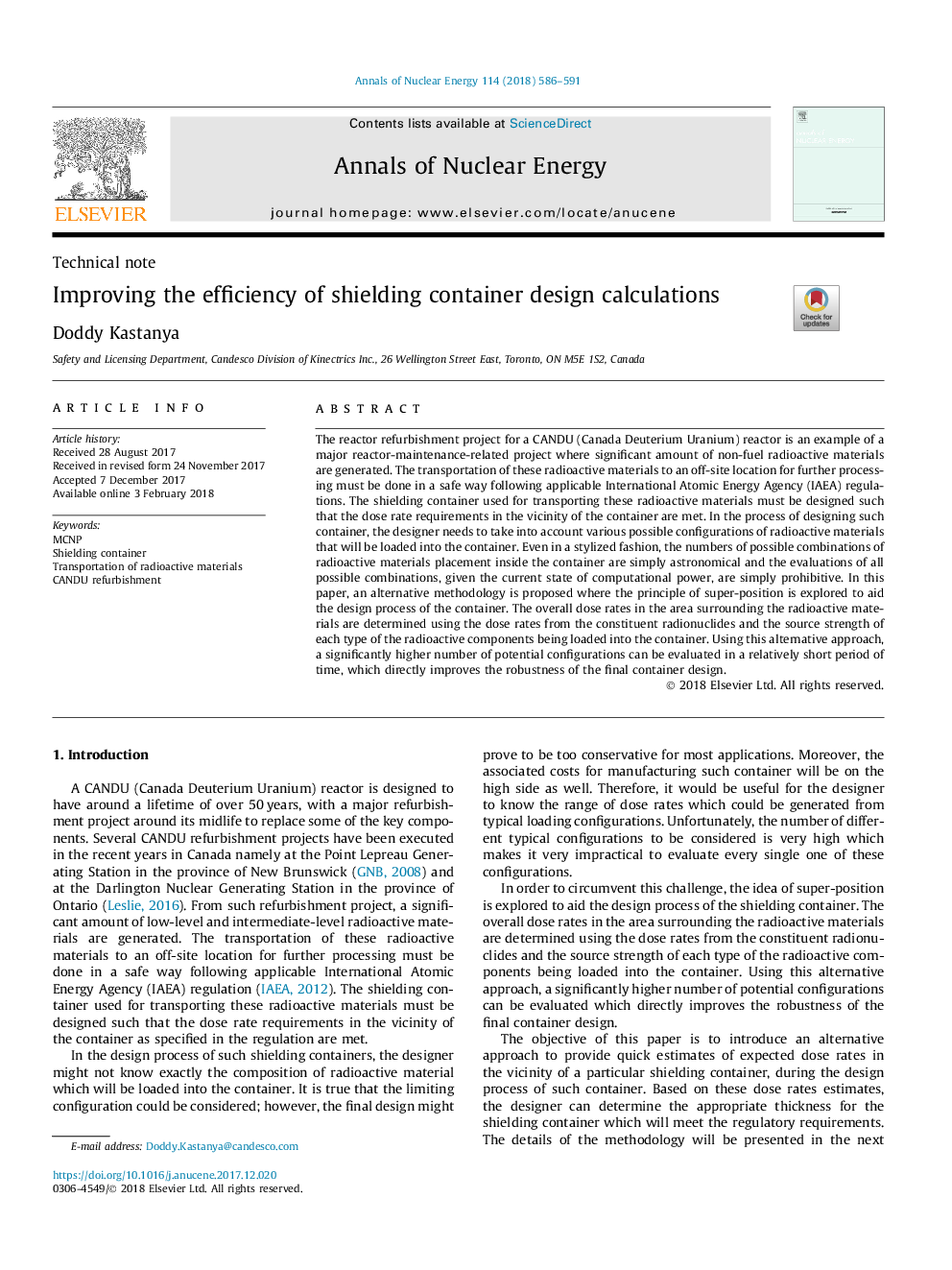| Article ID | Journal | Published Year | Pages | File Type |
|---|---|---|---|---|
| 8067216 | Annals of Nuclear Energy | 2018 | 6 Pages |
Abstract
The reactor refurbishment project for a CANDU (Canada Deuterium Uranium) reactor is an example of a major reactor-maintenance-related project where significant amount of non-fuel radioactive materials are generated. The transportation of these radioactive materials to an off-site location for further processing must be done in a safe way following applicable International Atomic Energy Agency (IAEA) regulations. The shielding container used for transporting these radioactive materials must be designed such that the dose rate requirements in the vicinity of the container are met. In the process of designing such container, the designer needs to take into account various possible configurations of radioactive materials that will be loaded into the container. Even in a stylized fashion, the numbers of possible combinations of radioactive materials placement inside the container are simply astronomical and the evaluations of all possible combinations, given the current state of computational power, are simply prohibitive. In this paper, an alternative methodology is proposed where the principle of super-position is explored to aid the design process of the container. The overall dose rates in the area surrounding the radioactive materials are determined using the dose rates from the constituent radionuclides and the source strength of each type of the radioactive components being loaded into the container. Using this alternative approach, a significantly higher number of potential configurations can be evaluated in a relatively short period of time, which directly improves the robustness of the final container design.
Keywords
Related Topics
Physical Sciences and Engineering
Energy
Energy Engineering and Power Technology
Authors
Doddy Kastanya,
